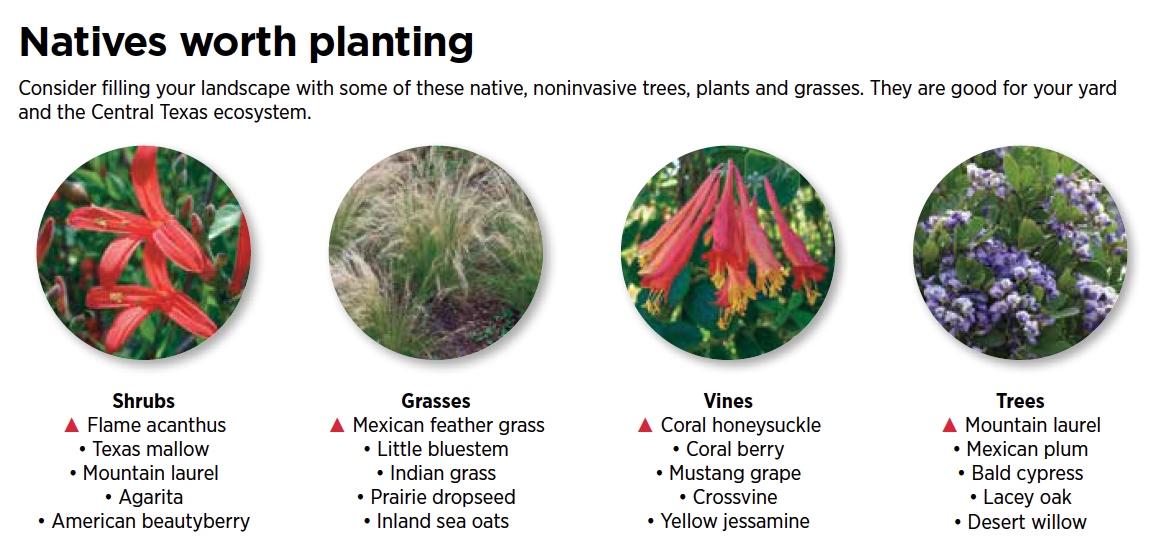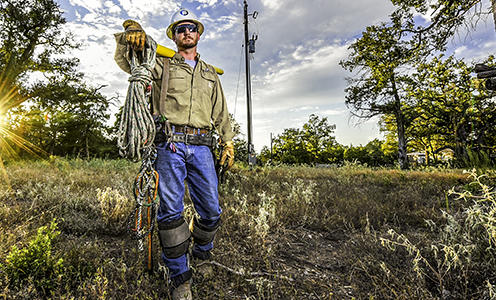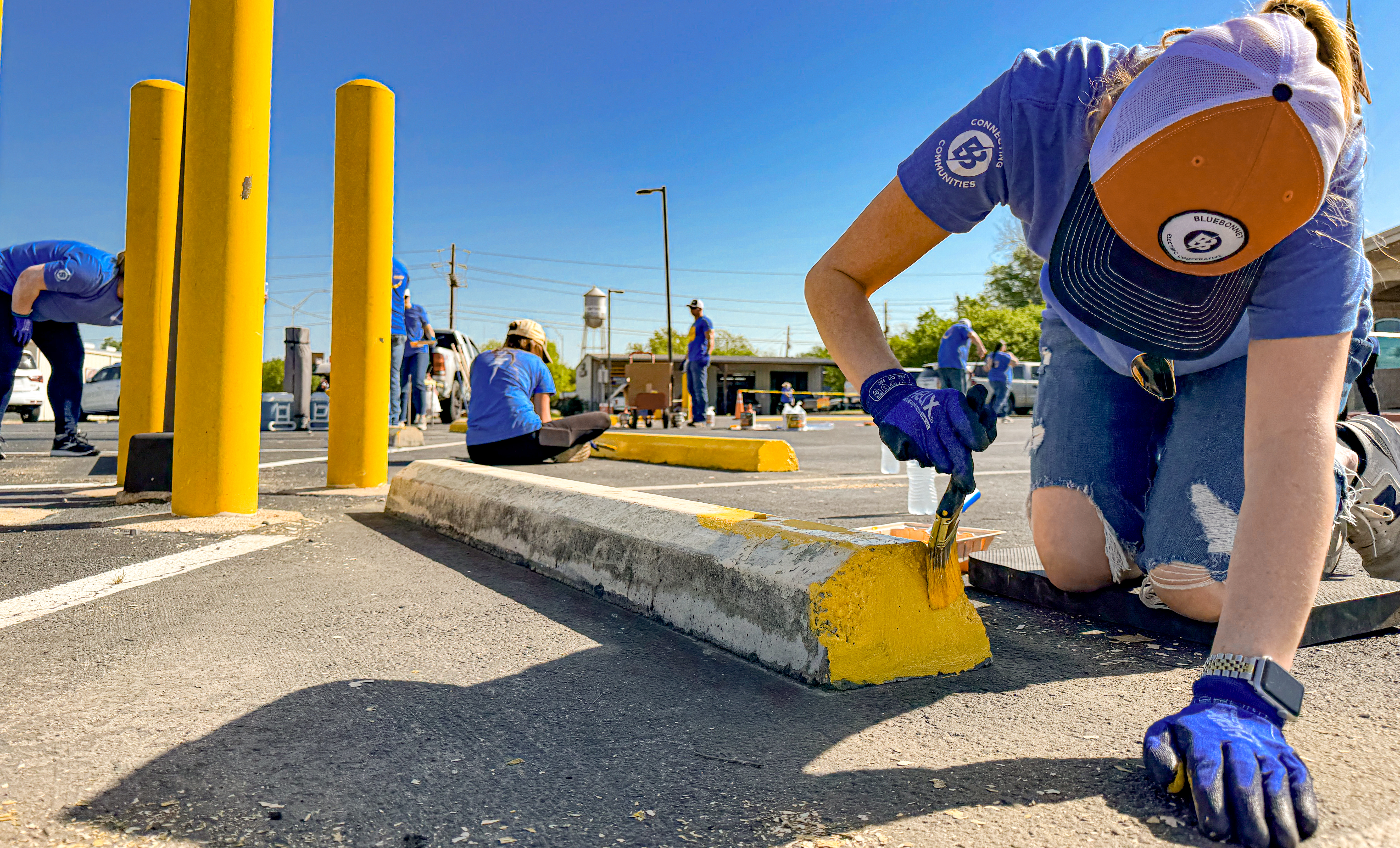The cooperative way
Recent news
Call it hip camping or just a new way to enjoy nature on someone else’s beautiful land.
Stories by Addie Broyles Photos by Laura Skelding
Nature lovers have found a new way to sleep under the big, bright stars of Central Texas by camping on privately owned land discovered through the use of websites such as Hipcamp, The Dyrt, Tentrr and even Airbnb.
Hipcamp.com, the largest of the sites, started 10 years ago and expanded into Texas about seven years ago. Campers can browse diverse listings ranging from primitive sites without so much as a fire ring to glamping tents complete with electricity and running water.
Other sites, like thedyrt.com, let campers browse public and private campgrounds, and some public locations can be booked directly on the site. Even airbnb.com has expanded into the camping space in recent years.
Campgrounds have long been overseen by federal, state, county or regional park systems, or they’ve been privately operated. Many are in beautiful spots around the state, from riverfronts to canyons, the Gulf Coast to Big Bend. Now private landowners who may want to host only a couple of campers a night have found the websites can provide them with some supplemental income.
There are more than 50 small, private campgrounds in the Bluebonnet Electric Cooperative region listed on these websites. We talked with five landowners about how this industry has diversified their income stream, what they’ve learned about being good hosts and what it takes to let campers experience their slices of the Lone Star State, from the lush shores of the San Marcos River to an animal sanctuary in Dime Box to the fields of Bleiblerville.
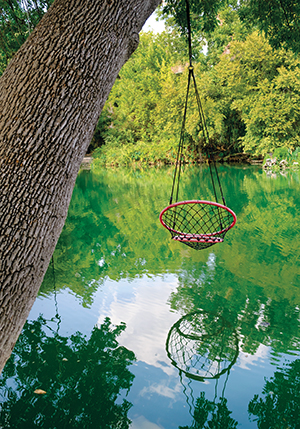
THE BEST DAM SPOT
Near Staples, on the San Marcos River,four tent sites, three acres, from $50 per night for two guests, on hipcamp.com; amenities include river access, outdoor shower, use of kayaks and paddleboards, portable toilet
As a child, Laura Grumbles spent long days on the San Marcos River. She never imagined that she’d spend her retirement hosting campers who flock to the emerald green river that keeps this northern pocket of Guadalupe County so lush.
The former preschool teacher grew up in Staples, between Martindale and Fentress, not far from the slow-moving water that, for many years, powered a cotton gin next to the small bridge that leads into town. In the late 1980s, when Grumbles was in college, her dad bought that gin, including the dam that controlled the water powering it, as well as a couple of acres along the river.
Her parents eventually moved into the small house next to the old gin, and Grumbles, her siblings and their growing families would often gather at this little slice of heaven to skip rocks, float down the small rapids and gaze up into towering trees.
The family knew that people with privately owned riverside properties like theirs had monetized their land by creating campsites, but their dad wasn’t keen on the idea.
‘‘Dad was so afraid of lawsuits,’’ Grumbles said. But when he died in 2019, at 92, “I looked at my sister and I said, ‘What are we going to do with this place?’ People say, ‘What a beautiful spot,’ but how can we share it without overloading it?”
The camping websites, following the Airbnb model, have provided enough income to allow some landowners to retain ownership of family property.
“Hipcamp has given the third generation a way to keep the family legacy intact,” Grumbles said.
At their handful of small campsites on the river’s gravel bar, there aren’t picnic tables or fire rings, because the river floods every few years. One of the sites, on higher ground near the gin, has a hammock and a picnic table. There’s also a portable toilet and a trash dumpster, which cuts into the profits but makes hosting guests less of a headache.
“If I could get the forecast of flooding from the good Lord, I’d have a bubblegum machine down there.” With more than 300 reviews, Grumbles’ “The Best Dam Spot” is one of the most popular privately owned Texas campsites listed on Hipcamp.
“Our venture into all this was born when outdoor life came back into everyone’s life,” she said. Although she sometimes deals with rowdy campers and tossed cigarette butts, being a host for up to four groups of campers is a joy. “I camped on that gravel bar with my son and his friends many times,” Grumbles said.
“My campers bring my childhood and my home life back alive. When we hear children laughing down at the gravel bar, it brings back fond family memories because we were able to have that with our children.” Guests have told her that overcrowded public campsites with paved roads jammed with vehicles make camping on private land alluring.
Some folks driving cross-country can more easily find camping locations along their routes. For others, being on private land brings a sense of security and an escape from crowds.
“We’ve met the most wonderful people — people who’ve become friends — and I feel bad charging,” she said. “It pays some of the property tax, and it’s fun to share.”
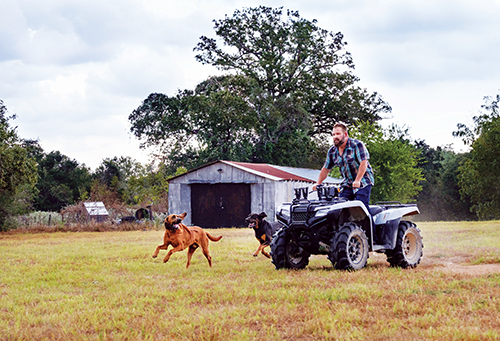
FIREFLY RANCH
Bleiblerville, Austin County, four tent sites, 22 acres, from $30 per night for four guests, listed on hipcamp.com; amenities include hike-and-bike, horse and off-road vehicle trails, and a portable toilet
Aaron Barnett grew up in the California mountains near Yosemite.
He had traveled the world, working in the oil and gas industry, and ended up in Houston with a career in biotechnology. Then he started looking for a piece of land where he could spend the next chapter of his life.
A single dad with a teenage son, Barnett settled on 60 acres of rolling hayfields with a farmhouse and an old barn in east Austin County near Bleiblerville. He thought about making the steel-roofed barn into a second dwelling, but instead decided to remodel the “rust bucket” into something he could share with people who come to the property via his listing on hipcamp.com.
Barnett wondered if his property could prove attractive to campers who prefer a primitive approach: no shower, no bathroom, no paved road to the campsite. “I learned that I’m not going to get hundreds of visitors, but there are a lot of folks who don’t have $500 for a camping trip,” he said.
Campers have come to his property while attending the Bellville knife show in April or competing in a local bike race. Some are “overlanding”: driving long distances and camping along the way, often in a camper van built for that purpose.
Even though the RV market has slowed since its peak during the pandemic, Barnett believes it will grow again. People still want to live on the road, work remotely or travel during their retirement years.
Barnett plans to make the barn a free, air-conditioned communal space – complete with Wi-Fi – for anyone who stays on the property. It can be used as an office, or a place to relax in comfortable chairs with a glass of wine to watch the sunset. He even plans to add a small stage so he can host live music and weddings, and guests can camp or stay in an RV, starting next year.
“The pandemic changed how a lot of us think about our future,” he said. “We spent all that time staring at the same four walls, and now lots of folks are thinking, ‘Maybe it’s time to go.’ ”
Even though Barnett has traveled the world, he likes the rolling hills of this part of Austin County best. “It’s way too pretty of a place for me to have it by myself and not share it,” he said.
“I searched for a year for this place,” Barnett said of his land, which is five minutes from a paved road. “Rush hour here is five John Deeres and three F-150s,” he said. Barnett nicknamed the place Firefly Ranch because of the countless lightning bugs that give it a special glow at night. “It feels like a million miles from anywhere,” he said. “The campers I’ve met are lovely people, and every one of them reacts the same way: ‘Oh wow, you’ve got this private park. How did you pull that off?’ ”
STARLOVE RANCH and SANCTUARY
Near Dime Box, Lee County, 102 acres, six RV and tent sites, from $35 per night for four guests, on hipcamp.com and thedyrt.com; amenities include biking and hiking trails, farm tours, rescue animals including cows and a potbellied pig, and a portable toilet
In Lee County, Hollie and Davey Schacherl are looking beyond corn, cotton and cattle to bring life to a little over 100 acres that have been in Davey’s family for more than 150 years.
Since 2017, they’ve operated Starlove Ranch and Sanctuary about 7 miles south of Dime Box, as a regenerative farm with more than 30 rescue cows, a potbellied pig named Norman and a hike-and-bike trail around the edge of the property.
Before the COVID-19 pandemic, the Schacherls hosted events at Starlove, but in 2020, when millions of Americans took to the road for camping and RV trips, the couple opened their property to campers through several websites, including Hipcamp and The Dyrt.
“We didn’t consider ourselves ready to open to the public, but the next day, we got a notification that a camper was coming,” Hollie said. “We scrambled to get things ready, and ever since, we’ve been further developing the space.”
Today Starlove has six campsites suited for either tents or RVs, and a new biodigester bathhouse that harnesses methane gas to fuel a kitchen range.
The couple had been living in Austin for about five years when they had twins, who are now 5 years old. They started to feel constrained by city life. Moving back to his family’s land was not something he’d ever considered, Davey said, until Hollie came into his life.
“I knew the line of succession was eventually going to pass to me, but it was never anything I had considered,” he said. “I have a lot of pride in being a Texan, and I like to be a Texan that breaks people’s preconceived notions of what Texans are. I feel prideful to still be here and still holding onto this property.”
As vegans, they wanted to shift away from raising cattle for beef production, which is how the family had paid property taxes in the past. “We knew we needed to monetize it in a new way,” he said.
They formed a nonprofit so people could donate to help cover the costs of feed to keep the cows on the ranch. They hosted events and set aside a portion of the property for paid campers.
“It’s been really cool that the people who have come out seem to be, typically, in alignment with what we’re doing,” she said. “We’ve had families and couples, van-life travelers, and small groups of youngsters, people in their 20s, coming out. I fight the urge to mother them. We walk the line of being helpful and available, and giving them space.”
Hollie, who grew up camping on public land in Oregon, said the private campground option is “really cool because there’s such individuality across the board. Every place has its own flavor, and you can see the landowner pour a bit of themselves into the space. There’s a bit of something for everybody.”
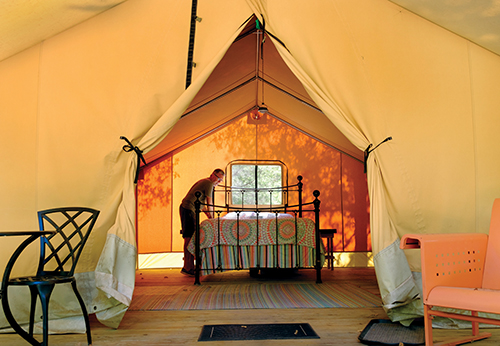
ARDOR WOOD FARM
Red Rock, Bastrop County, two tent sites, one glamping tent, $40 and $90 per night for two guests, listed on hipcamp.com, with more information at ardorwoodfarm.com; amenities include a new cedar outhouse with composting toilet, hiking trails, Nigerian dwarf goats, and a brick-and-stone labyrinth
Married retirees Graham Pierce and Karen Knight don’t spend much time resting on their 67-acre Ardor Wood Farm in southern Bastrop County.
About six years ago, Hipcamp was expanding and reaching out to landowners about becoming hosts. “I said, ‘Nobody wants to camp on a farm,’” said Pierce, who was raised on a farm in Ireland before moving to the United States for a career in medicine.
Knight talked him into creating a listing for the farm they bought in 2015. The first afternoon it was listed, a guest booked for the next day.
“I ran out with the tractor and mowed a place between some trees and created a campsite,” he said.
Over the next eight years, they added a second campsite and built a cedar outhouse with a composting toilet. They hung signs around the property, like the ones you might see at a public park, educating visitors about different species of plants and animals on the land.
While building the couple’s farmhouse, Pierce lived in a safari-style tent that is now the farm’s “glamping” tent, complete with a bed, tables, chairs, a private fireplace and an outdoor shower.
“I’m not an extreme tree hugger, but I do know we need to find a balance, so we’re trying to bring a lot of life back to the farm.”
The couple maintains four miles of trails through the forests and meadows, a small herd of Nigerian dwarf dairy goats in an enclosure near the farmhouse and a handful of Texas longhorns in one of the fenced-in fields.
They insist on meeting every guest to foster connection and talk about safety on rural land. “There are lots of ways for people to hurt themselves out here,” Pierce said.
One of his keys to private campground success is to offer add-ons for guests, such as bottle-feeding the baby goats or touring the property with Pierce, who is nicknamed “the Celtic Cowboy.”
On the tour, Pierce explains the importance of reducing invasive species and creating habitats to repopulate native ones, such as bobwhite quail and wild turkey. Pierce and Knight host classes and events for both campers and small groups that visit the farm but don’t stay overnight.
Those sessions align with the couple’s vision for the farm, including dinners, cheesemaking, and what Pierce calls “difficult conversations around the fire.”
“Karen and I are complete opposites in everything. We do see eye-to-eye on some things, but we are just different, and that’s what America is supposed to be.”
Pierce and Knight say their goal isn’t simply to host campers; they want to educate people about revitalizing the land through these conversations and hands-on activities.
The most amazing thing about becoming unexpected campground hosts has been meeting kids who, after two days, “are holding my hands saying they don’t want to leave,” he said. “When you take kids and people and you put them in nature, you disconnect to reconnect, with yourself or your spouse or your kids or anything. We think that’s the best therapy you can get.”
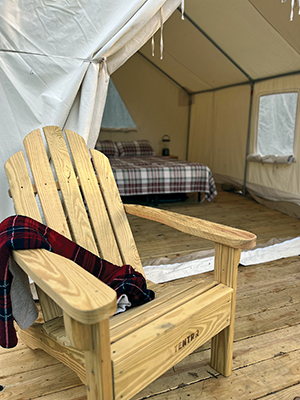
CAMP IDLE WILD
Near Caldwell, Burleson County, one glamping tent, $75 per night for six campers, listed on airbnb.com and tentrr.com; amenities include a queen-sized bed, camping gear, portable heater, portable toilet, sun shower, hiking trails
Lauren and Kendall Sawyers bought some land in Burleson County a few years ago and were content to do the “ag-life” thing.
“I jumped into raising Angora goats, and he’s raising cattle, but we have this land with a wooded area in the back with a pond and didn’t want to keep it to ourselves,” Lauren said. She found out about the all-in-one camping company Tentrr, which started in the Northeast.
The company ships kits that start at $4,900, which include a glamping tent, a wooden platform to set it up on and tables, to landowners like her. The kit makes setting up an attractive campsite easier.
“I loved the idea of people not having to haul all their camping stuff to come out here,” she said. “Here we are on a country road with miles of ranches in between you and another camper. It’s primitive, but you don’t have to bring anything,” she said.
The one glamping tent includes a camping toilet and a solar-heated outdoor shower. They provide wood for a fire and s’mores kits, and guests can meet the goats if they want. Lauren, a landscape architect, and Kendall, an electrical contractor, have two children.
They’ve added bedding and utensils for Camp Idle Wild guests, who need only to pack food and drinks in a cooler and “just show up.”
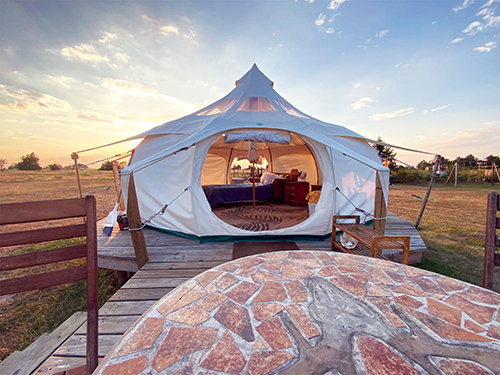
A few more private camping spots in the Bluebonnet area
Dozens of privately owned campsites are available in the Bluebonnet area. Here are a few listed on hipcamp.com or thedyrt.com that offer interesting settings and experiences.
- Sleep high above the ground at Robin’s Nest Treehouse in Caldwell County south of Lockhart. Campers can stay in a fully outfitted pad nestled among seven oak trees, complete with a cowboy hot tub (heated water in a stock tank) and air conditioning. Chill in a hammock, or borrow a canoe or a kayak to paddle around the on-site pond.
- On the San Marcos River is a vintage Shasta RV at Get Along Ranch in Martindale, across the river from the newly revitalized downtown, with its cafe and boutique grocery store. Bring a kayak or stand-up paddleboard and catch live music.
- In Austin County, you’ll find Life is Wonderful in New Ulm RV, a 20-by-50-foot place to park your fifth-wheel RV with full hook-ups and a view of a pasture. It’s within walking distance of the town square.
- In between Shelby and Latium, 10-acre Lucky Farm has three campsites, two RV sites and two glamping sites on the back five acres. Previous campers have noted how quiet and private the spaces feel, especially after all the hustle and bustle of the nearby Round Top Antiques Fair.
- In northern Bastrop County, not far from McDade, you’ll find the intentional homesteading community of Amazing Graze, whose residents invite visitors to stay in a bell-shaped glamping tent that overlooks a stock pond on this 40-acre farm. Guests also have access to a hammock, fire pit and saltwater Jacuzzi.
- Near the Bastrop and Fayette county line, Colorado River Camping offers 12 primative campsites, dispersed across the property, including one spot on an island that is accessible only by kayak, canoe or paddleboard. You can float to the property, too. There are no toilets, so bring your own bathroom bags or make arrangements with the host to rent the use of the bathrooms in the house.
- In eastern Travis County, SHAMBA Farm, short for Sustainable Homestead and Microclimate Based Agriculture, is a 10-acre farm and nature retreat that’s home to animals including goats, chickens, ducks and geese. Campers looking for a primitive site can learn about permaculture and sustainability from the owner, a yoga teacher, herbalist and beekeeper.
Want campers on your land? Here are tips
- Decide how many campsites and campers your land — and you — can reasonably handle.
- Start slowly, and think about creating a destination for people; give them something they want to see or do. Don’t just offer a piece of dirt. Even a shady creek or pond to fish in can be attractive.
- Give campers ideas for things to do in the area: where to eat, towns to visit, sites to see on their drive.
- Consider getting additional liability insurance. Many websites, including Hipcamp, Tentrr and Airbnb, offer insurance, but hosts who have numerous campers say they prefer extra protection.
- Learn about the Texas Agritourism Act. It can offer information and some liability protection for landowners who want to use part of their land as a tourism destination.
- Listen to your campers. Get their feedback about how to improve your listing or the campsite.
- Be a good host. Opening a campsite means you are in the hospitality business. Respond to campers’ messages quickly; greet them when they arrive.
Tips for campers going off the beaten path
- Read listings closely. If you must have a bathroom, make sure the listing with the beautiful photos has one. If you want to bring your dog, confirm that is allowed.
- Glass is rarely a good idea when camping, even if it is allowed.
- Always read the reviews. Your fellow campers will have lots to say about these campsites, but take reviews with a grain of salt. Leave your own review after your stay.
- Pack in, pack out. Camping on people’s private land does not mean they will clean up your mess. Bring trash bags, and unless told otherwise, take your refuse with you.
Shop the sites for unique area campsites
There are several popular websites to check out if you are looking for privately owned places to camp in the Bluebonnet Electric Cooperative region.
They include:
- Hipcamp (hipcamp.com)
- The Dyrt (thedyrt.com)
- Airbnb (airbnb.com)
- iOverlander (ioverlander.com)
- FreeRoam (freeroam.app)
Test your knowledge of friends and foes in Central Texas landscapes
By Addie Broyles
They seemed like good ideas at the time.
Remember the Chinaberry tree in your parents’ backyard? Who didn’t have a thick privet hedge for privacy? And what’s so bad about a backyard full of Bermuda grass?
The bark scale and lone star tick are high on the bad-bug list in Central Texas. Do you know what they look like?
Our quizzes test your knowledge of undesirable plants and insects in our landscapes. Most are classified as invasive species, which are nonnative species that are bad for the environment, economy or your health. Others may not make the invasives list, but can still present problems in area lawns and fields.
It can take time to fully understand problems with a species, said Mike Arnold, director of The Gardens at Texas A&M University and a professor in the university’s Department of Horticultural Sciences.
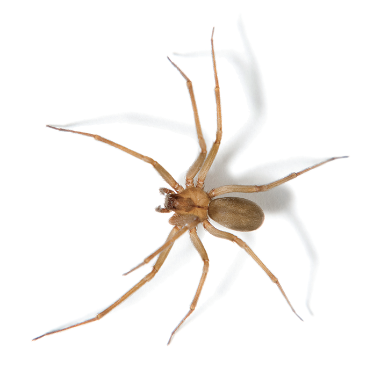
We’re talking about “aggressive or adaptive plants,” he said. Invasives can outcompete native species and cause a devastating ripple effect in the ecosystem and the industries that rely on it. They cost the United States $137 billion annually, according to the Texas Invasive Species Institute in Huntsville.
Some of the most economically harmful invasive species of plants and creatures are in Texas lakes. Plants such as giant salvinia, water hyacinth and zebra mussels hurt the local ecosystem, cause millions of dollars in damage to water treatment plants, and cause lost boating and tourism revenue on heavily affected lakes.
When a region loses its natural diversity, it is more susceptible to diseases and harmful pests, too.
“As we experience global climate change, invasives are going to put increased physiological effects on these ecosystems,” Arnold said. “When an extreme cold snap kills a certain plant, it creates opportunities for plants that weren’t previously invasive to become a problem.”
Test your knowledge of the plants and bugs (and one worm) that make the nice and naughty lists in area gardens and fields with our quizzes. Plus, learn what native plants can best replace less-desirable ones in your landscape.
The Great Central Texas Plants Quiz
Is it good for your garden, or will it sow destruction?
It’s time to test your knowledge of what’s growing in your landscape or pasture, and learn a little more about plants in our region: Are they dependable natives or destructive interlopers?
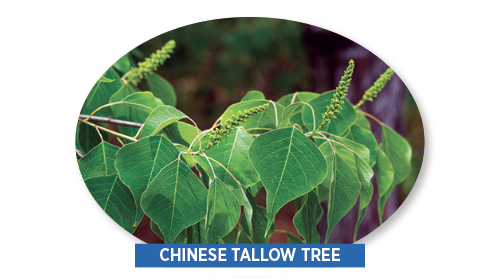 1
1
__________, an invasive tree that originated in China, grows in the Bluebonnet region. Long used as a landscaping tree, it became widespread in the 1950s. It crowds out native plants with its deep taproot and tolerance for drought.
A. Chinaberry tree
B. Heavenly bamboo
C. Chinese privet
D. Chinese tallow tree
Answer: D
The Chinese tallow trees in our area were introduced by the U.S. government as a source of seed oil for soap. Also known as “popcorn trees,” their waxy seeds look like a favorite movie snack. But don’t eat them. They’re poisonous!
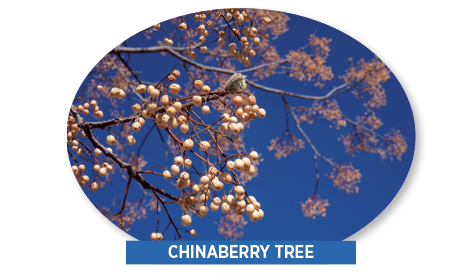 2
2
Which two of the following are true about the chinaberry tree, a member of the mahogany family, native to China, Indonesia and Australia?
A. It was brought to the United States in the late 1700s by a French botanist.
B. It’s not bad for planting because it provides shade.
C. Seeds can be poisonous to people and pets, and birds can get intoxicated by eating rotting seeds.
D. It is found in all 50 states.
Answers: A and C
Even though these fast-growing trees are shade kings, chinaberries are invasives that sprout so many trees under their canopy they can become a landscaping mess. They are sold in many nurseries in the South, because they can’t withstand cold climates. Chinaberry has yellow seeds and violet flowers. It is similar to the Western soapberry, which is native to Central Texas.
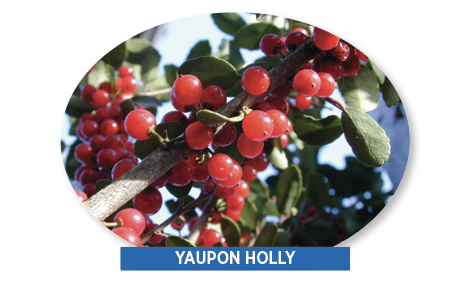 3
3
Privets — also known as Ligustrums — are still popular hedge plants in many Bluebonnet-area yards. There are many varieties, but the Chinese privet can quickly take over a Central Texas ecosystem. Which of these is a better shrub alternative that also happens to be the only native-grown source of caffeine in North America?
A. Yaupon holly
B. Cenizo
C. Texas mallow
D. Flame acanthus
Answer: A
The yaupon holly is a better choice. The woody evergreen shrub or small tree can grow up to 25 feet, and female plants are known for their bright red berries. They are native to the eastern, southern and southwestern states. Yaupon holly’s leaves and twigs can make a caffeinated tea you may find for sale at local farmers markets. The other plants on the list are also native and make excellent substitutes for the pestilent privet.
4
Bermuda grass is still popular as a turfgrass, but it is also considered a weed. It is one of the most common aggressive grasses in Texas, likely arriving from Africa. It can handle Central Texas heat and droughts, creeps into crops, covers the soil and is hard to remove. Consider planting this native turfgrass instead:
A. Zoysia
B. King Ranch bluestem
C. St. Augustine
D. Buffalo grass
Answer: D
The only native turfgrass on the above list is buffalo grass, which once fed millions of grazing bison from Mexico to Montana. It doesn’t require a lot of water. Zoysia and St. Augustine grasses are popular but aggressive and can spread rapidly. King Ranch bluestem, also aggressive, came from Europe and Asia in the 1920s and was planted on the famous King Ranch in South Texas in the 1930s.
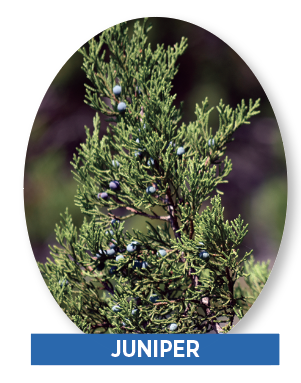 5
5
True or false: Juniper trees are among the state’s worst invasive tree species.
Answer: False
Junipers, as well as cedar trees, are responsible for many Central Texans’ allergies from December through February, but both are native to Texas. In fact, junipers have been growing here for centuries. Many people mistake junipers for cedars. The two types of trees have a similar smell, but junipers belong to the cypress family and cedars to the pine family. Ashe junipers, though widespread, provide food for birds and butterflies, and forage for mammals. One common juniper, however, is named "native redcedar," which may contribute to the confusion.
6
Native plants in many rivers, lakes and creeks of Central Texas have been getting pushed out by invasives in the last 20 years. Conversely, which two of these water plants should you be happy to see in your water garden?
A. Cow lily
B. Alligator weed
C. Hydrilla
D. Humped bladderwort
Answers: A and D
Cow lily and humped bladderwort are good choices if you have a lake or pond. The bladderwort is attractive, plus it can capture and consume insects. Avoid alligator weed and hydrilla at all costs. Hydrilla is right up there with water hyacinth and giant salvinia as one of the most damaging invasive water plants in the Bluebonnet region, including in Lake Somerville and the Fayette County Reservoir. Hydrilla can suffocate other plants, fish and some animals.
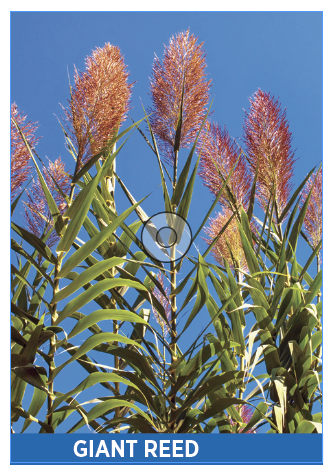 7
7
This aggressive invasive, native to East Asia, can tower more than 20 feet tall in watery areas throughout the Bluebonnet region, including in ditches alongside roads. It grows thick roots and absorbs water that could benefit native plants.
A. Giant reed
B. Heavenly bamboo
C. Giant hogweed
D. Salt cedar
Answer: A
Although all of the above are invasive plants, the giant reed is perhaps the biggest threat. It can burn quickly and spread via pernicious, hard-to-kill rhizomes. The clumps of reeds are hard to dig out of the ground. Many folks resort to a glyphosate herbicide.
8
 What flowering tree that your parents might have planted turned out to be a bad idea (and not just because it stinks in spring)?
What flowering tree that your parents might have planted turned out to be a bad idea (and not just because it stinks in spring)?
A. Magnolia
B. Bradford pear
C. Crepe myrtle
D. Oleander
Answer: B
It can look nice, but it’s the weedy Bradford pear that was introduced from China in the early 1900s. Some folks still plant it, even though it smells terrible when it flowers. Its branches break easily in storms. The other three flowering trees on the list — magnolia, crepe myrtle and oleander — look nice and are popular, but they can outcompete native trees for growing room. Lady Bird Johnson would have preferred you plant a Texas redbud.
9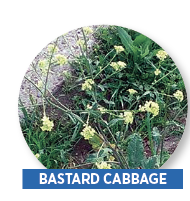
Don’t let their cute little yellow flowers fool you. This plant is choking out Texas’ beloved wildflowers.
A. Rue
B. Horsetail
C. Beggar’s lice
D. Bastard cabbage
Answer: D
Noxious, weedy bastard cabbage from southern Europe and northern Africa, also known as turnip weed or wild rape, smothers native plants and can quickly cover a field. Nativized rue and horsetail are fine plants to grow in your yard. Beggar’s lice is native, but it can fill your yard with burrs in summer.
10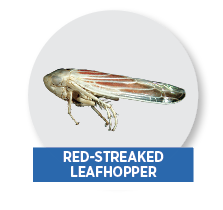
These two invasive species go together like grackles and parking lots.
A. King Ranch bluestem and red-streaked leafhopper
B. Hackberry trees and cankerworm caterpillars, also known as inchworms
C. Agarita bushes and carpenter bees
D. Greenbrier vine and possums
Answer: A
Bluestem and the leafhopper, which may resemble a grasshopper, are both invasive. The insect feeds on native and nonnative grasses, and sugarcane crops. Hackberry trees and agarita bushes are weedy, but they’re native to Texas and are food sources for wildlife, including cankerworm caterpillars and carpenter bees. The nativized greenbrier vine — originally from the eastern United States, just like the possums that feed on it — isn’t as much of a pest as the poison ivy that usually grows near it. By the way, grackles are native, too. Parking lots, not so much.
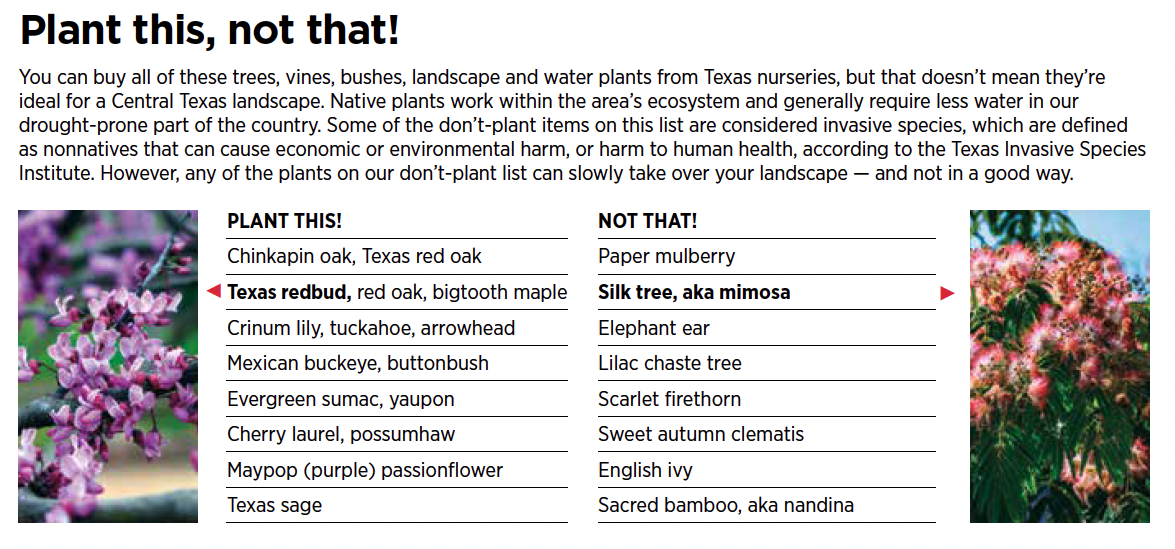
Good bug or bad bug? Take the quiz.
Stop before you squish! That insect could be good for your landscape. Most bugs are good — about 97% of them, according to some experts. But there are some insects that cause more harm than help to people, animals or the environment. Beneficial bugs help pollinate plants and crops, aerate soil, balance the ecosystem, recycle organic matter and even eat bad bugs. Test your knowledge of native, nonnative and invasive bugs, and one worm (it’s so bad, we couldn’t leave it out).
1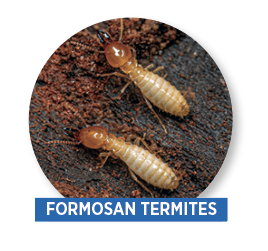
Formosan subterranean termites have been eating lumber in Texas homes since at least the 1950s. Why are they worse than regular termites?
A. They build huge aerial nests.
B. They reproduce faster than other species.
C. They secrete a foul odor.
D. They resist all forms of treatment.
Answers: A and B
Formosan termites are the most destructive kind, causing more than $1 billion in damage to U.S. homes annually. There are many ways to keep termites at bay: Get information from Texas A&M’s AgriLife Extension website: Go to citybugs.tamu.edu/factsheets/ and search for "termites." If you’ve already got termites, Formosan or not, call in professionals to use termiticide, fumigation and/or continual baiting until the colony is eliminated.
2
Which three of these ants should you leave alone in your yard?
A. Tawny crazy ants
B. Red fire ants
C. Pyramid ants
D. Leafcutter ants
E. Harvester ants
Answers: C, D & E
Pyramid, leafcutter and harvester ants are all native. They might carve a path in your grass or make a bald spot near their nest, but they are important to our ecosystem. Invasive tawny crazy ants and red fire ants are decimating our native ant populations. Texas A&M’s fire-ant research and management project recommends using pesticide baits from late August through October.
3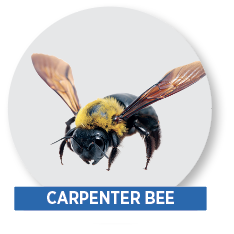
True or false: Honeybees are a native species that thrives on Texas wildflowers.
Answer: False
There are more than 1,000 species of native bees in Texas, but honeybees are not one of them. Honeybees are native to Europe, Africa and the Middle East, although they’ve been in North America since the 1600s. “Hardcore naturalists aren’t fans of honeybees, but they don’t disrupt native bees, to our knowledge,” said Molly Keck, an integrated pest-management program specialist with Texas A&M University who hosts two podcasts on Texas pests. Bees native to Texas include bumblebees, carpenter bees and sweat bees.
4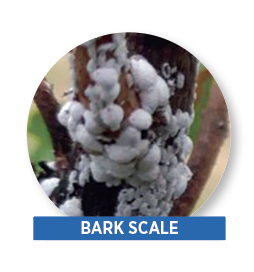
Love your crepe myrtles? Watch out for this tiny insect causing big problems in Brazos, Williamson and Travis counties.
A. Bark scale
B. Varied carpet beetle
C. Confused flour beetle
D. Cochineal scale
Answer: A
Some scales, like cochineal, which lives on prickly pear cactus, are native, but the bark scale is not. After emerging from clusters of felt-like egg sacs, these tiny, oval-shaped insects with shell-like coverings can quickly give rise to a dark, sooty fungus that blackens crepe myrtle bark, making the tree susceptible to disease. Flour and carpet beetles are troublesome for homeowners, but they aren’t a problem for trees.
5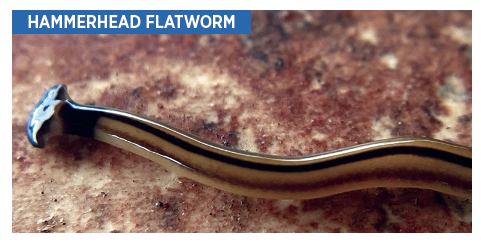
Hammerhead flatworms, recently spotted in Houston, are among the fastest-spreading, most troubling invasive species in Texas because:
A. They travel easily and quickly via wet ground, including sidewalks, roads and waterways.
B. They can irritate your skin and can make pets sick if ingested.
C. They can regenerate parts of their body, so stepping on one could just create two worms.
D. They eat other species of worms.
Answer: All of the above
Earlier this year, the state’s Invasive Species Institute made a special appeal to folks in Central Texas to be on alert for this flatworm with a hammer-shaped head that came to America 100 years ago from Southeast Asia. It reproduces and travels quickly, and harms humans and animals, so take a photo of it before you kill it by putting salt and/or vinegar or citrus oil on it. Email your photo to invasives@shsu.edu. Be sure to tell them where you found it.
6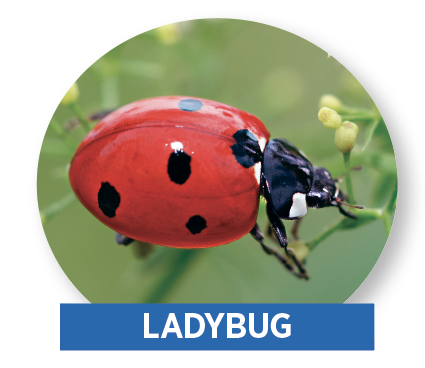
Which is the native: a ladybug or a ladybird beetle?
Answer: Ladybug
Although the two look similar, ladybird beetles, native to Asia, were introduced by the U.S. Department of Agriculture in the 1960s to control agricultural pests. They aren’t invasive, though, and even though they can swarm inside your home when it gets cold, or bite to protect themselves, they are good for your garden. The beetles eat aphids and mites, just like ladybugs.
7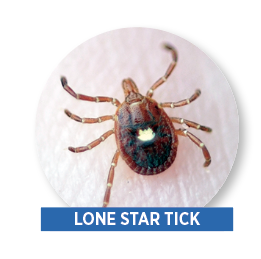
This insect’s bite can cause humans to have a sudden onset of an allergy to red meat.
A. Asian tiger mosquito
B. Damsel fly
C. Lone star tick
D. Common bed bug
Answer: C
The lone star tick — named not for Texas, but for the white star on its back — can cause alpha-gal syndrome, which can create a lifelong allergic reaction to red meat (think hives, itching, swelling and shortness of breath). These ticks, more common in the northeast United States, are starting to show up more in Texas, including in Fayette, Burleson and Austin counties.
8
Spiders might scare you, but you shouldn’t kill most of them: They are good for the environment. Which two of these should you leave alone (or carefully move outside if one is in the house)?
A. Wolf spider
B. Brown recluse spider
C. Orb spider
D. Brown widow spider
Answer: A and C
Wolf and orb spiders are two native species that do a lot of good in an ecosystem: They eat smaller insects and they're eaten themselves by birds. The brown widow is nonnative and, though less dangerous than its native cousin, the black widow, it still packs a venomous bite. The brown recluse’s bite can cause all kinds of problems, including fever, nausea and even necrosis.
9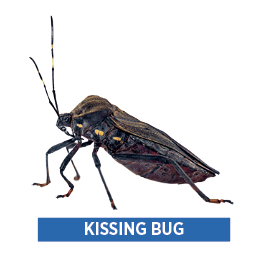
There are more than 150 species of assassin bugs in the United States, but this is the only one to worry about because it can carry a parasite that causes Chagas disease, which can be life-threatening.
A. Ambush bug
B. Milkweed assassin bug
C. Giant wheel bug
D. Kissing bug
Answer: D
Also known as the cone-nosed bug, kissing bugs can bite humans (and dogs) and transmit a parasite that causes the potentially fatal Chagas disease that can lead to flu-like symptoms, diarrhea, vomiting and a rash. Cases have been reported in Fayette, Lee and Travis counties. The other three assassin bugs are fine: They eat soft-bodied insects that might chew up your crops.
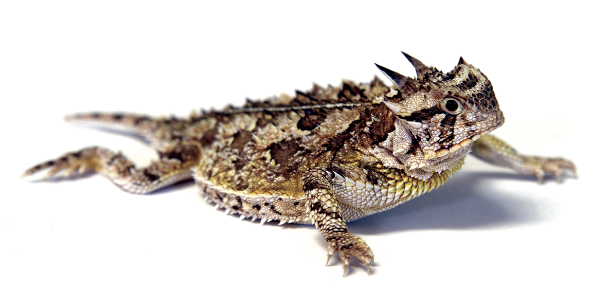
Did you know?
The Texas horned lizard, often called a “horny toad” or “horned frog,” is now considered a threatened species in Texas due to habitat loss and the decline of native ants, in particular the harvester ant.
Fun fact: In 1928, a horned lizard that was said to have been sealed in a time capsule
for more than 30 years was found alive after all that time. The lizard, named Ol’ Rip, went on tour, including a stop at the White House to meet President Calvin Coolidge, and inspired a rush on horned lizard sales.
